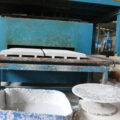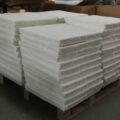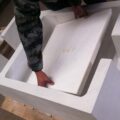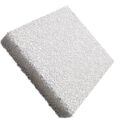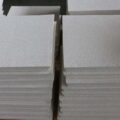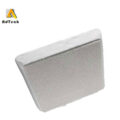Ceramic Foam Filters Supplier AdTech, not only produces filters, but also produces and sells filter box, online degassing equipment, casting tip and nozzle, refractory plugs, hot top casting parts, refractory coatings, aluminum fluxes, alloy additives, etc. Our products are sold all over the world, and many large aluminum factories are our customers. The quality of our ceramic foam filter plates can stand the test. Use the ceramic foam filter surface to remove impurities in the molten metal, especially small inclusion particles, it is very effective.
Main Performance of Ceramic Foam Filter
Light transmittance is an effective non-destructive testing method for foam ceramic filter plate products and filter area, and is another important indicator for measuring product quality specifications. The higher the light transmittance, the fewer blind holes and the more the number of filter holes, the better the filtering effect. All the light transmittances of the foam ceramic filter plates produced by our factory are more than 95%, which does not take into account the reinforcement of each filter plate and the area of the surrounding edges.
Porosity, pore uniformity, compressive strength and thermal shock performance are the four important physical and mechanical performance indicators of foam ceramic filter products. Porosity refers to the percentage of the volume of the cavity plate product to the total volume of the filter plate product. The porosity per unit volume determines the porosity of the foam ceramic filter plate. The greater the porosity, the greater the flow rate of the filter plate and the stronger the filtering capacity, and vice versa.

There are currently two main methods for determining porosity.
One is to calculate the volume of the aluminum casting filter cavity according to Archimedes’ law. Pour the water into a glass beaker with an overflow tube until the water flows out of the overflow tube. When the water is no longer flowing, the sample to be tested is uniformly rented in the water, and then the water flows out from the overflow pipe, and the volume of this part of the water is measured. Subtracting the amount of water overflow from the physical volume of the filter plate is the volume of the holes in the filter plate. The method is simple and convenient to operate, and the detection speed is fast. However, the fatal disadvantage is that the filter plate material itself has the characteristics of water absorption, so the amount of water discharged is less than the actual amount, resulting in very small measured data.
Another method is to determine the true density and bulk density of the filter plate sample, and then calculate the porosity according to the following formula: Porosity=True Density-Bulk Density/True Density*100%.
The pore uniformity mainly depends on the foam used in the production of the filter plate. The pore uniformity of the foam is good, and the pore uniformity of the filter plate is better.
Ceramic Foam Filters Supplier
AdTech is a professional ceramic foam filter manufacturer. AdTech supplies high quality ceramic foam filter for aluminum foundry. Ceramic Foam Filter product specifications are 7 * 7in, 9 * 9in, 12 * 12in, 15 * 15in, 17 * 17in, 20 * 20in, 23 * 23in, 25 * 25in, 26 * 26in or customized according to the shape and size of customer needs. The mesh number is 25, 30, 35, 40, 45, 50, 55, 60, 70, 80, 90 pp. It has the advantages of high strength, erosion resistance, strong adsorption capacity, and effective removal of tiny inclusions in aluminum liquid.




